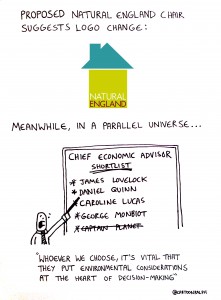 Natural England roused itself from slumber yesterday, perhaps after reading this blog (you never know – they do, you know!), and uttered a few weak words on the disappearance of a male Hen Harrier from Geltsdale in Cumbria.
Natural England roused itself from slumber yesterday, perhaps after reading this blog (you never know – they do, you know!), and uttered a few weak words on the disappearance of a male Hen Harrier from Geltsdale in Cumbria.
It’s good to know that Natural England is ‘very concerned’ about the state of a species on which the organisation has been working for well over a decade. NE is going to continue its work. Well that sounds like a good plan!
“The definition of insanity is doing the same thing over and over again, but expecting different results” (attributed, apparently with no evidence, to Einstein).
Natural England doesn’t even give a contact number for the police in their statement – it doesn’t look as though they are trying very hard does it?
And it is ‘Natural England’, corporately, that speaks – not a recognisable person. Gone are the days, long gone, when the chair of NE might say things like:“The hen harrier has unfortunately become the emblem of man’s callous disregard for the spectacular and majestic wildlife that we have in England. Following seven years of intensive monitoring and detailed research, the picture is unequivocal – hen harriers are being persecuted while they attempt to nest and birds are simply not returning to their breeding areas the following spring. The hen harrier should have a much wider range than it does which begs the question why its breeding success is now restricted to one regular site. The simple answer is that this magnificent bird is being persecuted to the brink of extinction as a breeding species in England.”
But then, that was in the days when NE had a chair called Doughty – by name and nature!
The Moorland Association website (not the most dynamically changing of websites) still has this link celebrating the wildlife of grouse moors. It’s time for NE to revisit this relationship with the Moorland Association given that the UK’s moorland SPAs and SACs are failing to maintain their populations of Hen Harriers, Peregrines, blanket bogs and the latest science shows that intensive grouse moor management increases greenhouse gas emissions, increases flood risk (probably), increases water treatment costs and decreases aquatic biodiversity. Why does the Moorland Association still have this special relationship with a government agency when the land managed by its members is under so much public criticism? Seems very odd doesn’t it? When is NE Council going to sort this one out?
[registration_form]
The timorous wee beastie is but a shadow of a former self, more fearful of its future since grey clouds gathered over last few years than being the ‘guardian’ of wildlife let alone nature conservation?
Ok, there are perhaps a few rare species remaining but sadly they are mute.
Perhaps Ralph’s revised logo should be offered to Ms Truss, Messrs Sells & Cross & Co.?
How we miss Martin Doughty!